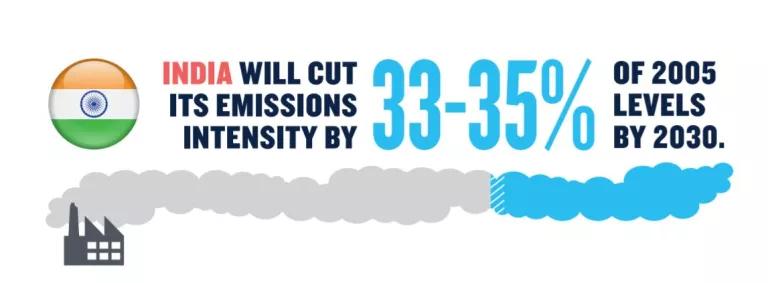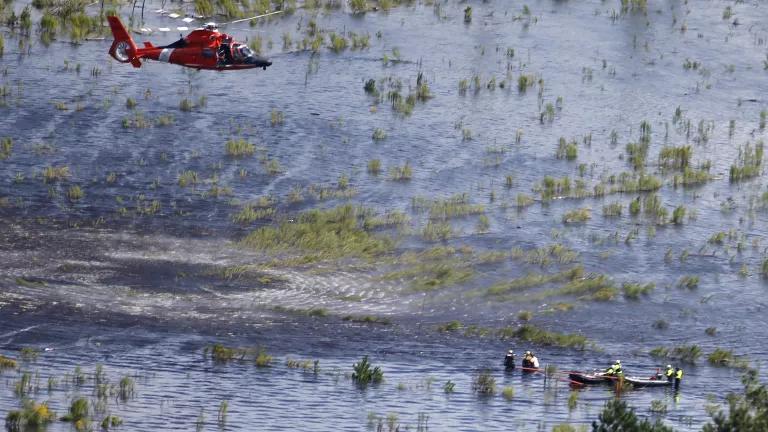India Focus: What to Watch During Climate Week 2019
World leaders are gathering in New York for the Climate Action Summit 2019 next week to discuss India’s ambitious actions to fight climate change.

With inspiration from millions of people around the world from New Delhi to San Francisco marching in the streets with the historic Climate Strike on Friday, world leaders are gathering in New York for the Climate Action Summit 2019 next week. India’s Prime Minister Narendra Modi will be attending the summit discussing India’s ambitious actions to fight climate change with the backdrop of the Trump administration pledged to withdraw from Paris Agreement.
India is one of the few countries on its way to meet its domestic clean energy goals as part of the Paris Agreement. India is now the fifth largest renewable energy producer in the world. The country has the fourth largest wind energy installed capacity and fifth largest solar photo voltaic capacity.
But there is so much more to be done. India’s power capacity is expected to grow six-fold from 356 gigawatts (GW) in 2018 to 2,300 GW by 2050, according to Bloomberg New Energy Finance. As a result, India is projected to overtake the United States to become the second largest power system in the world behind China by 2044. India remains a major greenhouse gas emitter and air pollution levels are spiking across cities. To top it off, communities in India and the Indian economy are extremely vulnerable to the impacts from the climate crisis, from extreme heat, massive flooding and severe cyclones.
India Paris Pledge & Signals for Climate Week 2019
At the historic Paris climate talks in 2015, India had made an ambitious climate pledge including reducing its emissions intensity by 33 to 35 percent below 2005 levels and achieving 40 percent of its installed electricity capacity from non-fossil sources by 2030. Three years later, despite facing huge pressures of economic and social development, India has made strong progress on its national domestic contributions (NDCs).
Looking ahead to Climate Week 2019 in New York, India’s Ministry of Finance in a discussion paper, previewed India’s likely position:
- Climate Finance is teeing up as a major issue. “[T]he reality is that implementation of NDCs of developing countries will apparently hit a roadblock in the face of uncertain future in the provisioning of climate finance.” The recent China and India statements emphasize the need for finance for climate action.
- Domestic priorities drive action in India, not international targets. India’s NDCs present its best efforts, given India’s abilities and national circumstances as well as equity concerns that developing countries are not historically responsible for the climate crisis.
- Expanding and clarifying action is likely, not increasing existing commitments. India may only be in a position to elaborate or clarify its post 2020 climate actions already pledged in its NDCs, which includes a 40% non-fossil-based power capacity by 2030.
- Look to 2023 for ramped up actions. India would consider a mid-term assessment of its actions and suitably recalibrate through re-examination and improvement when the global stocktake takes place in 2023.
While the Ministry of Finance’s paper presents a “reality check” for expectations of a big announcement, there are several bold actions to watch. In 2019, Prime Minister Modi has set into motion major programs to advance on clean energy, climate and health solutions in India. These domestic efforts should be included in India’s NDCs given their ambition.
1. Renewable Energy
The UN Climate Action Summit is held right before the second general assembly of the International Solar Alliance (ISA). Prime Minister Modi announced the ISA during the Paris climate talks and India has made strong progress in working with developing counties on expanding solar markets. In India, government officials have also indicated that India may ramp up its renewable energy goals to 500 gigawatts (GW) by 2030, up from the current 175 MW goal. Several Indian states have ambitious plans to scale-up renewable energy installations. For example, Rajasthan aims to install 50 GW of solar energy in the next five-six years and Gujarat plans to build 30 GW of renewable capacity by 2022 and no new coal plants in the state. Similarly, Chhattisgarh, a state with third-largest coal reserves in India, has also decided to not build new coal plants. These developments suggest that India is rapidly shifting towards lowering its coal dependence.
While large scale wind and solar markets are growing at a rapid clip and are expected to expand, affordable clean energy access remains a challenge in communities across India. According to Bloomberg New Energy Finance, India needs $100 billion in asset finance in the period 2016-22, to reach 135 GW in utility scale renewables by 2022. To achieve India’s clean energy goals, implementing financing and policy solutions is vital, as raised by both India and China.
2. HFCs and Cooling
As the UN Intergovernmental Panel on Climate Change (IPCC) issues sober warnings on rising temperatures, India’s economic growth increases the demand for cooling, which is projected to more than double by 2027. The India Cooling Action Plan, the first in the world, includes many critically needed measures on keeping India cool while addressing climate change. The plan marks a key milestone in India’s efforts to phase out chemicals used for cooling—including super pollutant hydrofluorocarbons (HFCs) used for air conditioning in cars, buildings and more—under the Kigali Amendment to the Montreal Protocol.
Strengthening and scaling up heat action plans and early warning systems across India is also critical to keeping India cool. Since the Montreal Protocol was amended with the Kigali Amendment in late 2016, after Paris, it seems likely that India’s efforts on cooling and reducing HFCs would be part of its NDCs, as is likely for other countries.
3. Energy Efficiency
Energy saving buildings are a critical part of growing India’s economy, keeping India cool and addressing climate change. Building on the successful launch by the states of Telangana and Andhra Pradesh and the hi-tech capital, Hyderabad, states and cities across India could scale up the groundbreaking online system for mandatory energy efficiency codes for commercial buildings. Buildings account for more than 30% of India’s electricity consumption, and the total built-up space in the country is growing at a tremendous rate.
Cool roof programs focused on low-income communities are also promising measures for saving energy and curbing cooling demand. Energy efficient building codes can transform the way buildings are constructed and unleash significant energy savings while growing the economy and combating pollution. Elaborating on the NDCs to include energy efficiency more explicitly with measurable goals is also a likely clarification that can be expected from India.
4. Electric Vehicles
The rapid deployment of electric vehicles in India is a key solution to address climate change, improve air quality and reduce dependence on imported oil. Transportation remains one of the largest, and fastest growing, global sources of climate pollution, air toxics, and smog. Globally, the sector accounted for 14% of global greenhouse gas (GHG) emissions in 2010 and represents the fastest growing source of emissions. The sector is also a major contributor to air pollution which is responsible for 5.4% of all deaths worldwide, including 4.2 million premature deaths annually from outdoor particulate matter alone.
India still has one of the lowest motorization rates in the world but is set to take off in a similar trajectory as China and motor vehicles are estimated to contribute 20 to 40% of the air pollution in major cities such as Delhi. EVs are a hot opportunity in India with the new national FAME-II policy and burgeoning EV programs in Delhi, Gujarat, Karnataka, Kerala, Maharashtra, Telangana, among others.
While a reality check is signaled, the bold and inspiring voices from the Climate Strike are urging climate action now – an even more pressing reality. NRDC and our partners will be in New York for Climate Week with the aim to support stronger action worldwide.



